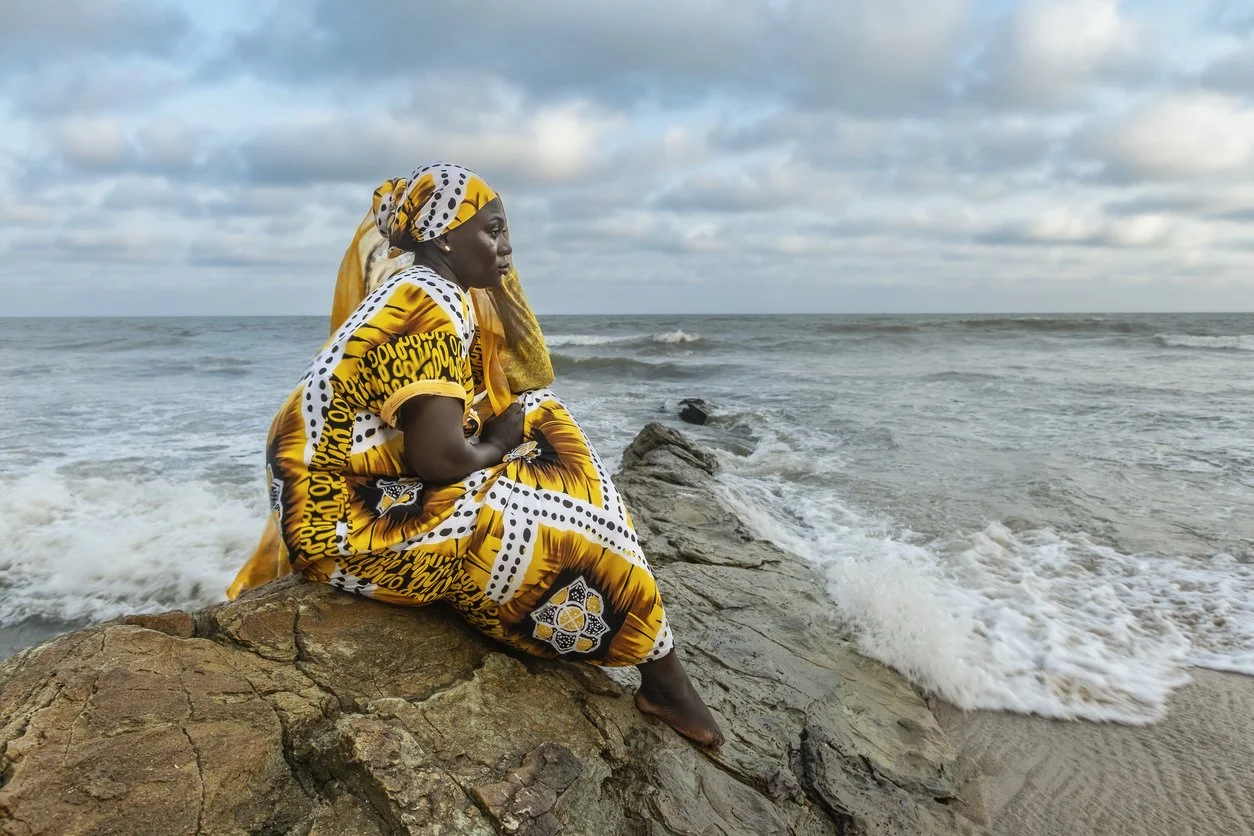Dance With Dignity: Inspired by Bessa Ngana
Bessa Ngana; the “women of fabric,” holy women of Luanda’s Island, guardians of dignity, wisdom, and tradition.
A Humble Student
I am only a humble student of this beautiful culture. Even so, the small amounts of time I’ve been able to spend immersed in it have inspired me deeply. It has lit a fire in me to keep looking further, to keep learning, and to begin sharing what I can here in Australia.
I know I will never fully understand or be of the culture. But I can honour it. I can celebrate it. I can hold a little spark of it in my heart and body, and invite others to do the same. When we already love the music of Kizomba and Semba, when we already feel joy in the social dance, then learning more of its roots only deepens our respect and love for where this gift comes from.
A Healing Dance
I love working with women. And I love how Kizomba, Semba, and Angolan culture connect so naturally with somatic practice and other healing arts. Dancing together, grounded in rhythm, restores something in us. It gives back what our screens, our busyness, our trauma, and our isolation take away. This is truly a healing dance.
More Than Sensual
In the West, we are often taught a shallow representation of body expression. Ginga is presented as a set of mechanical sensual movements, without context or depth. As with so many cultural dances and music, we tend to whitewash it, sterilise it, and strip it of all its nutrition, making it more appealing to our palate, but emptier in substance.
In Angola, I have seen empowerment expressed differently, lived and embodied. Women, from little girls to grandmothers, dance with their whole body; not as performance, not for the gaze, but for themselves. Their sensuality isn’t denied, but it isn’t exaggerated either. It flows naturally, uniquely, and belongs to them. It is authentic, dignified, and deeply moving.
Inspired by Bessa Ngana
There is a phrase in Kimbundu, “Bessa Ngana” — often pronounced today as Bessangana. It means “women of fabric.” Originally it referred to the traditional costume worn by the women of Luanda’s Island communities. Over time, the phrase grew to mean much more.
Bessa Nganas became known as “Blessed Ladies”: women of dignity, moral standing, and cultural guardianship. They were seen as the mothers of the Island, custodians of tradition and ancestral wisdom. Their fabric was not only clothing, it was a mantle of authority.
If this is part of the cultural DNA of Angola, how can we not let it inspire our dance pedagogy?
A New Approach
Right now, Kizomba teaching across much of the western world still frames followers as passive. Yet followers hold so much potential for expression, in their movement, their smile, their eye contact, their poise. What if we shifted this? What if we built a teaching method for followers inspired by Bessa Ngana: women of dignity, wisdom, and cultural authority?
That shift would move beyond teaching only movements. It would mean transmitting energy, creativity, musicality, and cultural knowledge. It would mean seeing followers not as ornaments, but as partners with a voice who shine!
Why This Matters
During my recent trip to Angola, I felt a deeper integration of what it means to be a follower in Kizomba. I was encouraged to own my body expression more fully, to let myself shine, and to step into presence with dignity.
Since coming home and integrating these experiences, everything has been deepening and making more sense. The timing was striking. Soon after my return, Eddy shared his post that explained these ideas with such clarity and beauty that it felt like all the threads I’d been holding finally began to weave together.
This has changed not only how I dance, but how I experience myself; my inner dialogue, my sense of responsibility to represent and honour this tradition that has captured my heart. Angola changes me each time I go. It reaches deeper into my body and my heart, leaving me humbled and inspired to share what I’ve been given.
Of course, some of this can only be truly felt by going there. But much of the energy reached me even before I first travelled to Angola. Through my teachers, through the music, through reading and listening with curiosity; through the slow osmosis of culture seeping in when you allow yourself to be touched by it.
Kizomba and the legacy of Bessa Ngana exemplify another way for us to consider our roles as women in our own culture and society. True empowerment begins inside the body and radiates out with dignity, shaped by our own history and style. And when we dance in this way, we connect. It nourishes us. It heals our wounds and celebrates the joy of being alive together.
Further Reading & Credit
Much of the inspiration for this reflection came from an article by my mentor Eddy Vents, who has written powerfully about the role of women in Kizomba and the legacy of Bessa Ngana. Click here to read his full post here.
Official Recognition
In 2023, the Angolan government formally recognised the Traje da Bessangana as National Intangible Cultural Heritage (Património Cultural Imaterial Nacional). Through Decreto Executivo n.º 53/23, the Ministry of Culture acknowledged the Bessangana dress as a living symbol of Angola’s cultural identity, dignity, and continuity.
The decree emphasises the dress’s deep historical roots on Luanda Island (Ilha do Cabo), where women became known as Bessa Nganas — “women of fabric”. It also highlights how the tradition is inseparable from Angola’s music and dance heritage, particularly Semba, Rebita, and Massemba, linking clothing, movement, and cultural memory.
This recognition ensures that the Bessangana will be protected, promoted, and transmitted as part of Angola’s national heritage, safeguarding it for future generations.

